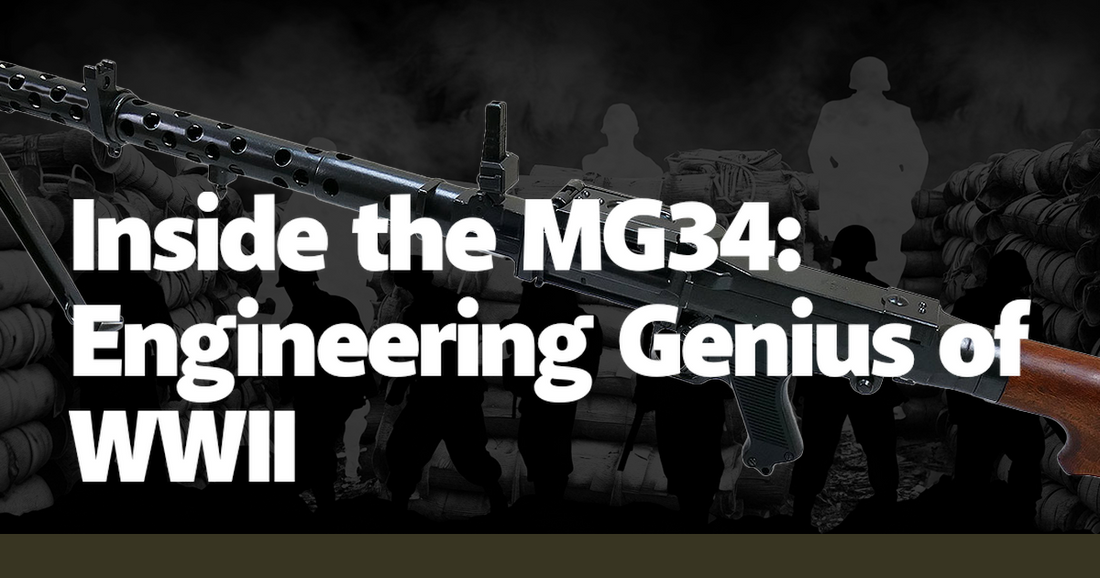In the annals of military history, few weapons have achieved the iconic status of the MG34, a masterpiece of German engineering that set a new standard for machine guns during World War II. Designed by Heinrich Vollmer and introduced in 1934, the MG34 was the world's first general-purpose machine gun, capable of both light and heavy machine gun roles. Its versatility, reliability, and sheer firepower earned it a formidable reputation on the battlefield. The MG34 was not just a weapon; it was a testament to the engineering prowess and innovative spirit that characterized German armament production during the war.
The MG34's design was revolutionary in several respects. It was the first machine gun to utilize a recoil-operated system with a rotating bolt, which significantly increased its rate of fire to an impressive 800-900 rounds per minute. This was a considerable advancement over previous models, which were often cumbersome and slow. The MG34’s quick-change barrel system allowed operators to swap out barrels rapidly when they overheated, a common issue in prolonged engagements. This feature alone made it a favorite among soldiers who valued both its efficiency and ease of use. The weapon's modular design also meant it could be adapted for various roles, from infantry support to anti-aircraft operations.
One of the most remarkable aspects of the MG34 was its precision engineering. Each component was meticulously crafted to ensure optimal performance. The weapon was made primarily from high-quality steel, which contributed to its durability and reliability under harsh conditions. The attention to detail in its construction was evident in the smooth operation of its moving parts, which rarely jammed or malfunctioned. This level of craftsmanship was a double-edged sword, however, as it made the MG34 expensive and time-consuming to produce, a factor that would later influence the development of its successor, the MG42.
The MG34's impact on the battlefield was profound. It was deployed extensively by the Wehrmacht and saw action on all fronts, from the scorching deserts of North Africa to the frozen steppes of the Eastern Front. Its versatility allowed it to be mounted on tripods, vehicles, and even aircraft, making it a ubiquitous presence in the German arsenal. Soldiers who wielded the MG34 often spoke of its devastating firepower and reliability. Anecdotes from veterans highlight the weapon's ability to lay down a withering hail of bullets, breaking enemy charges and providing crucial support during defensive operations. Its psychological impact on the enemy was equally significant, as the distinctive sound of its rapid-fire was enough to instill fear and hesitation.
Despite its many advantages, the MG34 was not without its drawbacks. Its complex design and precision manufacturing made it susceptible to dirt and debris, which could cause jams in the field. Maintenance was also a challenge, requiring skilled technicians and a steady supply of spare parts. These issues were exacerbated by the harsh conditions of the Eastern Front, where freezing temperatures and muddy terrain tested the limits of the weapon's reliability. Nonetheless, the MG34's performance in battle often outweighed these concerns, and it remained a key asset for German forces throughout the war.
The legacy of the MG34 extends beyond its wartime service. It influenced the design of subsequent machine guns, both in Germany and abroad. The MG42, which replaced the MG34 in many units, retained many of its predecessor's features while addressing some of its shortcomings. The MG42's simplified construction and higher rate of fire made it even more effective and easier to produce, but it was the MG34 that laid the groundwork for this advancement. The principles of versatility, reliability, and firepower that defined the MG34 continue to inform modern machine gun design, making it a seminal piece of military technology.
In the post-war years, the MG34 found new life in various armed forces around the world. Its robust design and proven combat effectiveness made it a valuable asset for many countries rebuilding their militaries. The weapon saw service in conflicts ranging from the Korean War to the numerous colonial wars of the mid-20th century. Even today, the MG34 is revered by military historians and collectors alike, who appreciate its engineering brilliance and historical significance. Museums and private collections often feature the MG34 as a centerpiece, a tangible link to the technological advancements and tumultuous events of World War II.
The story of the MG34 is a testament to the ingenuity and resourcefulness of its designers. It represents a pinnacle of engineering achievement in an era defined by rapid technological advancement and brutal conflict. The weapon's enduring legacy is a reminder of the critical role that innovation and precision play in the development of military technology. As we reflect on the history of the MG34, we gain a deeper understanding of the complexities and challenges faced by those who designed, manufactured, and wielded this remarkable machine gun. Through their efforts, the MG34 became more than just a weapon; it became a symbol of engineering genius in the crucible of war.

